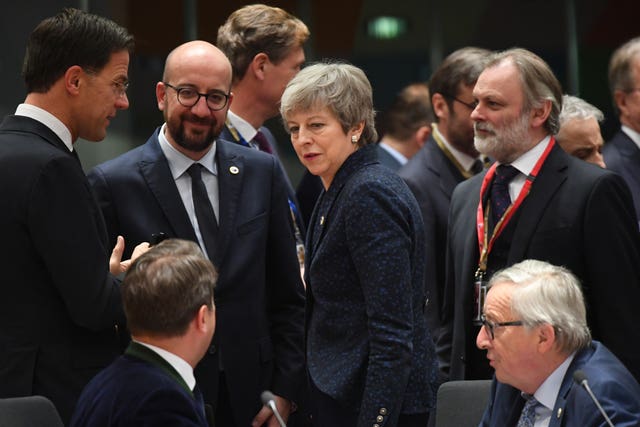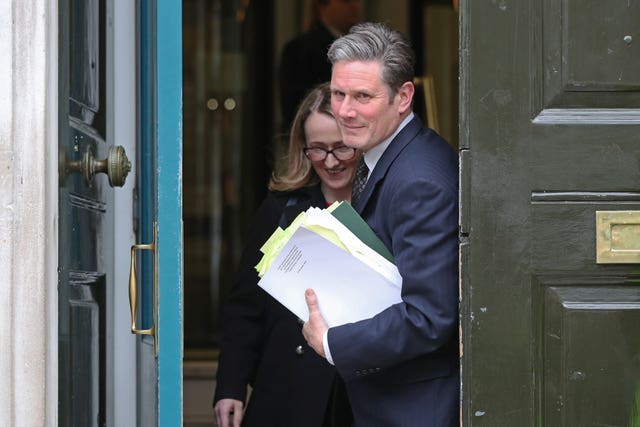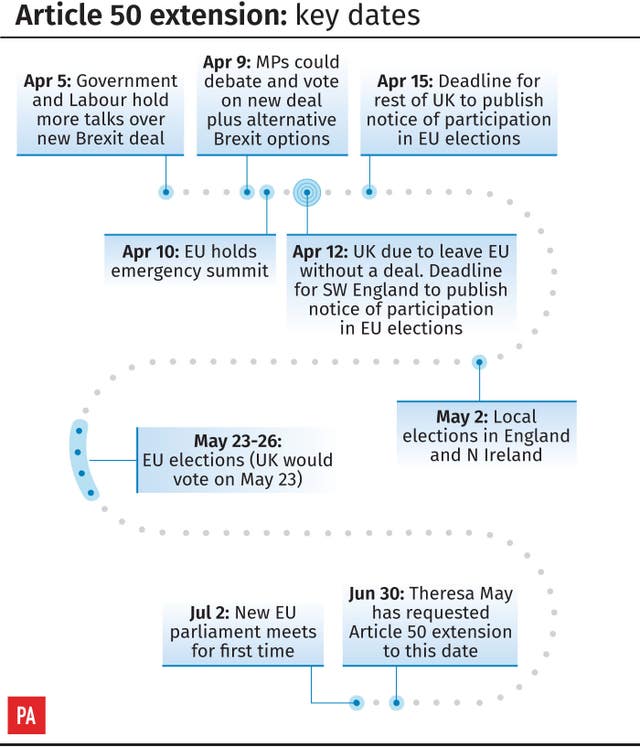The Brexit letter: What is Britain asking for and what might happen?
Questions continue to swirl around the UK’s withdrawal from the European Union.

Theresa May has written to the EU asking for a second delay to Brexit. So what’s in the letter and what does it mean?
– Who has the Prime Minister written to?
European Council president Donald Tusk. He will pass the letter on to leaders of the other 27 EU member states for consideration ahead of the April 10 emergency summit in Brussels.
– What is Mrs May asking for?
She wants the date of the UK’s withdrawal from the EU to be put back from April 12 to June 30, with an option for the break to come sooner if Parliament ratifies a Brexit deal.
– What does the EU want?
Mr Tusk has recommended an extension of a year to the spring of 2020, with a “flextension” clause allowing for earlier departure on ratification.
– Why does Brussels want a longer delay?
After two years of negotiations and repeated parliamentary defeats for the PM, the EU is far from convinced that the UK can dream up a new deal and get it approved by MPs in a matter of weeks – let alone have it confirmed in a referendum, if one is called.
Frustrated leaders do not relish the prospect of being called back to Brussels again and again to respond to ever more pleas from London for more time, so they want any extension to be long enough to give a realistic chance of success.
– Will we definitely get an extension?
This is likely, but not guaranteed.
All of the EU27 leaders must agree for a further delay to be granted, and some – notably France’s Emmanuel Macron – are showing signs of impatience to get the process over.
Also, if a backbench Bill tabled by Labour’s Yvette Cooper clears the House of Lords on Monday, MPs will have the power to turn down any extension agreed with the EU27 by Mrs May.
– What happens if there is no extension?
The UK leaves the EU without a deal on April 12 – next Friday.
Many experts have warned that this could lead to significant disruption to transport links and imports of food or medicines, though the Government insists that it has made extensive plans to mitigate this.
A minority of MPs regard a no-deal Brexit as highly desirable, as it will allow the UK immediately to regain control over its laws and borders and to start trade talks around the world.
– Didn’t Mrs May get turned down when she asked for June 30 before?
Yes. But the big difference from the last time she proposed this Brexit date in March is that she is now willing to make preparations to stage elections to the European Parliament in May.

– Why do the Euro-elections matter?
Voting is due to take place across the EU from May 23-26, with new MEPs taking up their seats at the start of July.
As long as the UK is a member of the EU, its citizens have a legal right to be represented in the European Parliament. So if the UK is still a member on May 23, it must hold elections.
If it did not, all decisions by the Parliament would be open to legal challenge – including the choice of the new European Commission president.
– So we’re going to have to vote for MEPs?
Not necessarily. If Mrs May’s plan works, the UK will ratify her Withdrawal Agreement before May 22, allowing the elections to be cancelled.
Under electoral rules, they can be called off as late as the day before polling day, and the Government has promised to reimburse local authorities for any money spent on elections which don’t take place.
– And will Mrs May’s plan work?
That’s the big question.
The Government is currently locked in talks with Jeremy Corbyn’s Labour in a bid to find a consensus deal which the House of Commons can agree before May 22 – or, failing that, a set of options which MPs can choose between.
If they find an acceptable compromise, Mrs May will have a chance of getting MPs to approve her Withdrawal Agreement, which has already been rejected three times by the Commons.
But both parties risk being split by the process.

– What might split the parties?
Any deal is likely to include Mrs May’s Withdrawal Agreement, which is hated by some Tories because of the backstop arrangements for the Irish border.
For Labour to be brought on board, it would also have to include changes to the Political Declaration on the future UK/EU relationship, probably involving some sort of customs union and a commitment to match European standards on workers’ rights and the environment, and possibly close alignment with the single market.
Many Tories will refuse to back a customs union deal, which quashes their cherished dream of an independent trade policy.
Fissures are less deep within Labour, but some of its MPs are wary of anything which might allow free movement to continue. And many Labour MPs want any deal to include a confirmatory second referendum, which is bitterly opposed by some on their side and most Conservatives.
Added to that is the tribal distaste MPs from both of the main parties feel towards co-operation with the “enemy”.

– So when will we leave?
This is completely up in the air.
It could be next Friday, without a deal. Or at some point before May 22, with a deal agreed in Parliament. Or on June 30, if Mrs May gets her way on the extension but then fails to secure MPs’ backing. Or in the spring of 2020, under Mr Tusk’s plan. Or never, if a second referendum is called and voters decide to remain.





